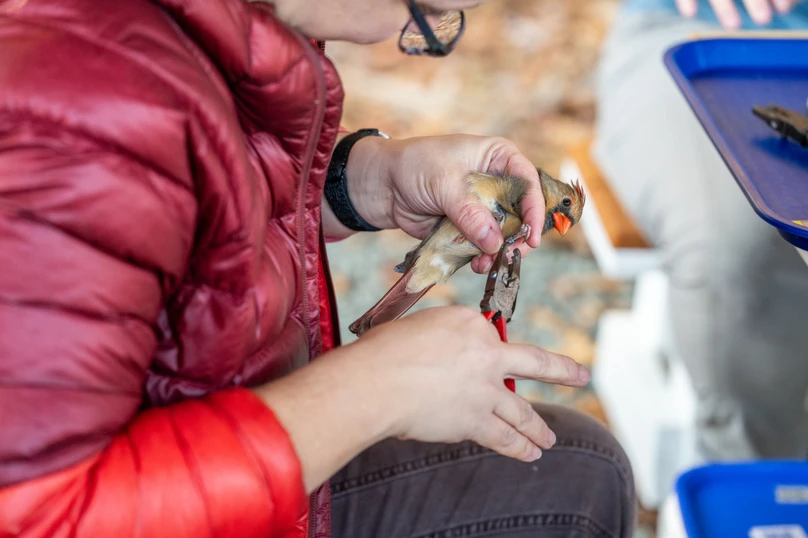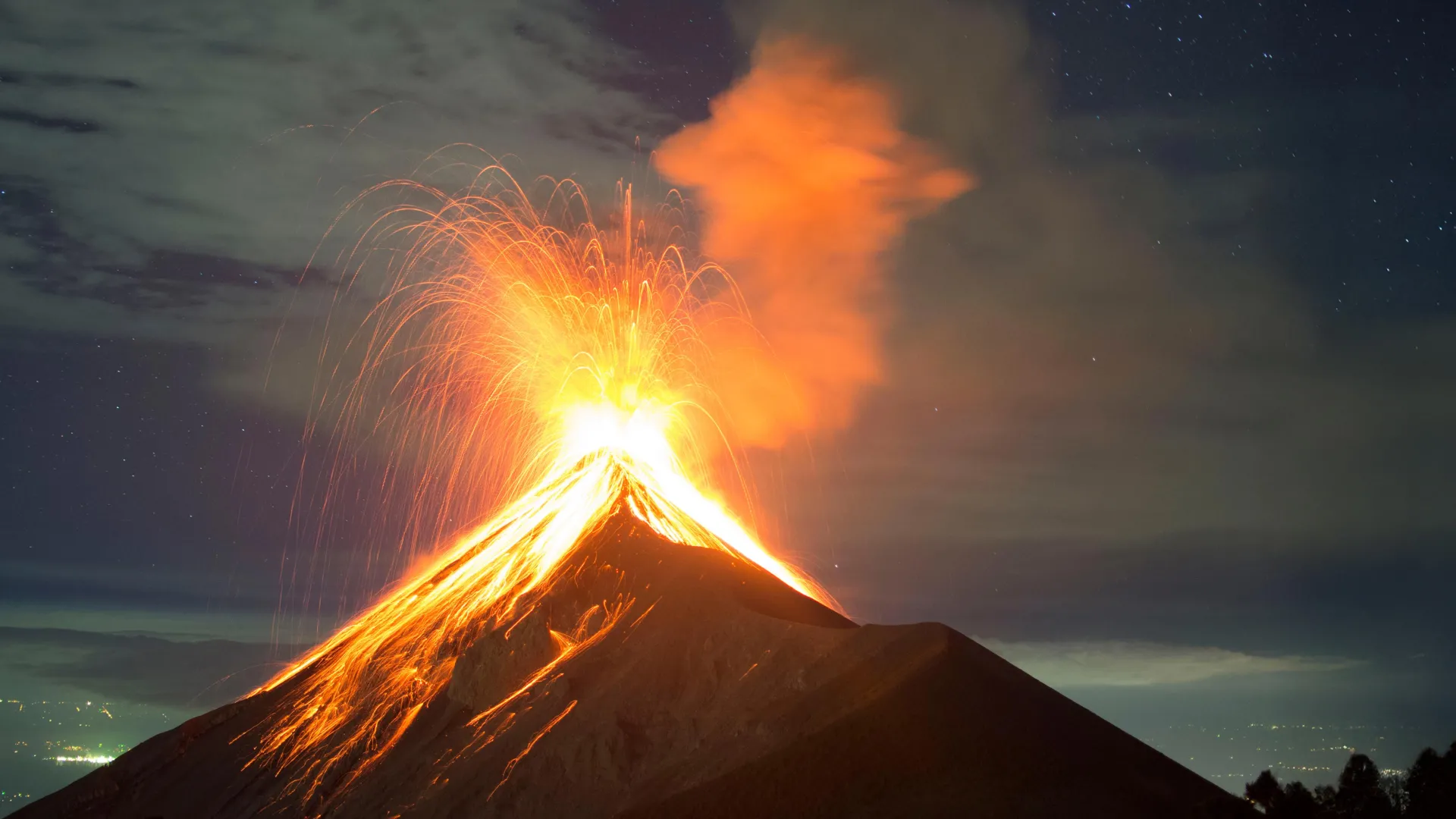PROTECT YOUR DNA WITH QUANTUM TECHNOLOGY
Orgo-Life the new way to the future Advertising by Adpathway Fishermen at Oyster Pier this June in south San Francisco. (Jillian Magtoto)
Fishermen at Oyster Pier this June in south San Francisco. (Jillian Magtoto)Lifelong San José resident Apollo-Genesis Braddock-Layton has fished the Pacific Coast’s shore for as long as he can remember—catching horseshoe crabs, smelt, and stingrays while listening to his grandfather’s stories of fishing in the Philippines. “That’s how he had to feed his family,” Braddock-Layton says. “If they didn’t catch fish that day, they didn’t eat.”
Subsistence fishing became Braddock-Layton’s reality when he was just 17 years old. For over a year, he spent nights in his car and lived off of his daily catch—often three-inch fish like perch or smelt, laid on top of a bed of rice. “That was my dinner,” he says. Now, housed and working, fishing is for fun, not survival. He often spends his day off fishing with his grandfather in Santa Cruz, or sometimes solo at Dumbarton Bridge in the South Bay, hoping for a meaty piece of striped bass to roast with lemongrass or make sinigang, a tangy Filipino soup stewed with tamarind and ginger.
But it’s likely that these fish contain PFAS, or perfluoroalkyl and polyfluoroalkyl substances, which have been manufactured by chemical companies since the 1940s. PFAS is the stuff that makes water and oil roll easily off of everything from non-stick pans to raincoats. It can also spread other chemicals, helping firefighting foam cool down fires. The danger PFAS chemicals pose comes from their design, which resists chemical breakdown—hence their not-so-cute nickname, “forever chemicals.” While chemical companies have known about the negative health impacts of PFAS since the 1950s, the federal government didn’t begin documenting the danger to humans until the late 1990s. Ongoing studies continue to find extensive damage to the liver, kidney, immune, nervous, thyroid, endocrine, and reproductive systems. According to USC’s Keck School of Medicine, communities exposed to PFAS-contaminated drinking water experience up to a 33 percent higher incidence of certain cancers.
PFAS ranks among the most concerning chemicals the San Francisco Estuary Institute (SFEI) studies, says environmental scientist Miguel Mendez, and they’ve slipped their way into the Bay through runoff. In late May, Mendez and several coauthors published a study that found PFAS levels in ten species of fish that live throughout the Bay exceeded safety thresholds set by multiple states. “We’re just seeing it in everything and everywhere,” Mendez says. “It’s more widespread than we really thought.”
But this news won’t stop some Bay Area residents like Braddock-Layton from fishing. While learning about PFAS in fish “makes me not want to fish in the Bay anymore,” he says, “I would most definitely go back.”
Fishing has always been part of Apollo-Genesis Braddock-Layton’s life. On the left: 25-pound striped bass he caught at Sunset State Beach in Watsonville; right: Braddock-Layton as a child, with his uncle. (Photos by his grandfather, Alberto Lauron)
Although direct exposures due to use in products can be quickly phased out by shifts in chemical production, exposures driven by PFAS accumulation in the ocean and marine food chains and contamination of groundwater persist over long timescales, according to a study by the Harvard Department of Public Health.
PFAS enter the Bay via wastewater—mostly from residential uses, though industrial laundries and car washes are significant industrial sources. Fish then take in the chemicals through their gills and the invertebrate prey they eat that burrow in PFAS-filled sediments. But scientists at SFEI have not yet found that current PFAS levels significantly harm fish populations.
“Cancer in a fish is probably not going to affect the overall ecology, or the health of the fish population, unless it’s in their early lifetime before they can reproduce,” says SFEI scientist Ezra Miller. “It sounds crass, but we may not care as much about carcinogenicity in fish compared to mammals and birds.”
For birds and mammals higher up the food chain, PFAS accumulates in their tissues in greater quantities than in fish. In 2004, SFEI found Bay harbor seals and cormorant eggs were among the most contaminated species in the world. While health impacts on these fish predators are not fully understood, humans are a good proxy. “We know that PFAS affects immune system function in humans, and there’s also some evidence of that in marine mammals,” says Miller. “If we all have similar systems, PFAS and chemicals can adversely affect those systems in the same way.”
So, how much PFAS are humans consuming from fish in the Bay?
SFEI has been studying this question for over fifteen years. Before 2020, the scientists found PFAS levels in most fish samples fell within the safe consumption guidelines.
But in its most recent study, SFEI did more sampling. With that and with better analytical methods, which could find more types of PFAS, the picture changed.
This time, Mendez and his team analyzed 107 samples across 10 species of sport fish from 2009, 2014, and 2019, at 12 stations throughout the Bay from Artesian Slough to Suisun Bay. Species included shiner surfperch (Cymatogaster aggregata), striped bass (Morone saxatilis), white croaker (Genyonemus lineatus), white sturgeon (Acipenser transmontanus), California halibut (Paralichthys californicus), common carp (Cyprinus carpio), largemouth bass (Micropterus salmoides), leopard shark (Triakis semifasciata), northern anchovy (Engraulis mordax), and Pacific staghorn sculpin (Leptocottus armatus).
Researchers then blended dozens of fish of the same species and similar size together, and sampled that fish slurry—it’s a cost-effective alternative to testing each individual. Over 90 percent of samples contained PFAS. More specifically, a type of PFAS called PFOS.
PFOS are among the most well-known types of PFAS “mainly because they’re the most tested,” says Mendez. They’re also the most regulated. In 2006, the U.S. Environmental Protection Agency brokered an agreement with eight major chemical companies, including DuPont and 3M, to phase out PFOS. Still, chemical companies continued to produce replacements: shorter-chain substances with similar toxic impacts that are harder to detect.
 A father fishes at Oyster Pier, while his young son checks out the fish consumption advisory sign. (Jillian Magtoto)
A father fishes at Oyster Pier, while his young son checks out the fish consumption advisory sign. (Jillian Magtoto)“We went from a smaller, more contained group to this really large group” of hundreds of thousands of PFAS, says Mendez. In his latest paper, researchers were able to test for 40 of the chemicals. “This really large group of contaminants can break down into PFOS,” he says. “That’s why we still think that we’re seeing them in the Bay.”
Now, SFEI is searching for Bay Area residents most likely affected by PFAS contamination. Last year, SFEI and the San Francisco Bay Regional Water Quality Control Board began plans for a Bay Area-wide survey of “people who are more likely to subsistence fish,” says SFEI environmental analyst Martin Trinh. “That’s going to be Asian fishers, Black fishers, tribal fishers.”
The latest comprehensive survey data on fish consumption in the Bay was collected 25 years ago by the Department of Health Services and SFEI, says Trinh. And it appears its survey coverage was limited. Forty percent of the people interviewed were white, the majority of which fished on private boats. Latino and Black fishermen each made up about ten percent. And over half of people who declined interviews were Asian, largely due to language barriers—and like Black and Latino fishermen, they largely fished on piers.
In the next survey, “we want to intentionally try to get to piers or other areas from the shoreline where we think there are communities of people fishing that are really relying on Bay fish to survive as a major food source,” says Kevin Lunde, a senior environmental scientist at the San Francisco Regional Water Quality Control Board. The board will survey in both English and Spanish, and more languages may be added, Lunde says.
When the California Department of Public Health conducted a fish consumption survey of 100 Chinese immigrants in San Francisco and 100 Vietnamese immigrants in San José in 2016 and 2017, it found both groups eat seafood at triple the rate of the average American adult. Participants also exhibited upper ranges of PFAS concentrations in their blood and urine at over double the rate of the average American—putting them at risk for kidney and testicular cancer, high cholesterol, and ulcerative colitis.
And it’s not just about how often they eat fish. Fish organs carry fatty tissues that bind with PFAS. Trinh recalls his own Vietnamese family braising and frying fish whole in South Carolina; Braddock-Layton says his aunts like to eat the kidneys for their iron.
Native tribes across the country, too, are assessing their own exposures. While the general public might fish recreationally, Tribes “rely upon wild foods,” says Tribal PFAS Working Group National Tribal Water Council member Daniel Kusnierz. Some may “eat organs or parts of the body of the fish like the head, the brains,” he says. “To their culture, it’s very important.”
South Bay anglers are likely most at risk. Here, water stagnates and major wastewater treatments spill pollutants into the Bay. “Every study that we’ve been looking at has all typically found the south to have the highest levels of concern,” says Mendez, in fish like leopard sharks, striped bass, and largemouth bass. SFEI has also found PFAS contamination in cormorant eggs to be highest in this region.
But people in the South Bay have long been told its environment is toxic.
“We’re overburdened by advisories,” says Anthony Khalil, sport fisherman and senior community engagement officer at SFEI. “There’s signs everywhere in certain communities … that say ‘step out,’ ‘radioactive,’ or ‘don’t fish here.’ ”
The commonly known ones are the mercury advisories that emerged in the 1980s—a caution that Keith Torres takes upon himself. Torres has fished in the South Bay since the 1970s, and has been wary of mercury since he began construction and mining-related work. “It might still be out in the water,” he says. “So I just really don’t eat that much.” He releases most of his fish back into the Bay, except when it’s a striped bass.
 A fish consumption advisory at Oyster Pier shows the recommended safe number of weekly servings. (Jillian Magtoto)
A fish consumption advisory at Oyster Pier shows the recommended safe number of weekly servings. (Jillian Magtoto)As for PFAS, he’s never heard of them—until this reporter brings them up. While California has fish advisories for heavy metals, PCBs, and other chemicals, it has none driven by PFAS. At least 17 other states do. Some states have had to address their PFAS problems earlier than California, according to state Office of Environmental Health Hazard Assessment senior toxicologist Wesley Smith. “SFEI’s study provides important data which is helpful for our work developing fish consumption advice in California.”
The current heavy metal and PCBs advisories might be enough, for now. “We’re seeing that those same fish that have high levels of these other contaminants also have high levels of PFAS,” says Mendez. “We think right now, following those consumption guidelines in the Bay are mostly protective.”
Still, making these guidelines stick faces an uphill battle.
“Whatever these messages are cannot break the habit of hunger, of self-reliance,” says Khalil. “These are really hard things to break in certain populations.”
While Braddock-Layton no longer relies on fishing for survival, the activity has become a much-needed respite from his often-chaotic work, family, and social life. “Every time I’m fishing,” says Braddock Layton, “it releases me from everything.” In that carefree mode, whether the fish is polluted is the last thing he wants to think about, so disregards the fish advisories.
There’s no easy way to get PFAS out of the environment. Scientists across the world are racing for magic bullets in everything from electrochemical filters to molecular nanocages. “We think we’re gonna ‘tech’ our way out of issues,” says Kusnierz. But his tribal working group’s concern is that broken-down PFAS chains will “reformulate and become a different kind of PFAS that might have equal concerns, or potentially even worse [ones].”
Kusnierz sees tribes taking on the task of remediation, like a tribal group in Maine that is using plants like hemp to pull PFAS from soils. “We really should be trying to get all these PFAS compounds out of the waste cycle,” he says. “Don’t just study a couple of compounds to death and then develop advisories.”


 2 weeks ago
29
2 weeks ago
29





















 English (US) ·
English (US) ·  French (CA) ·
French (CA) ·